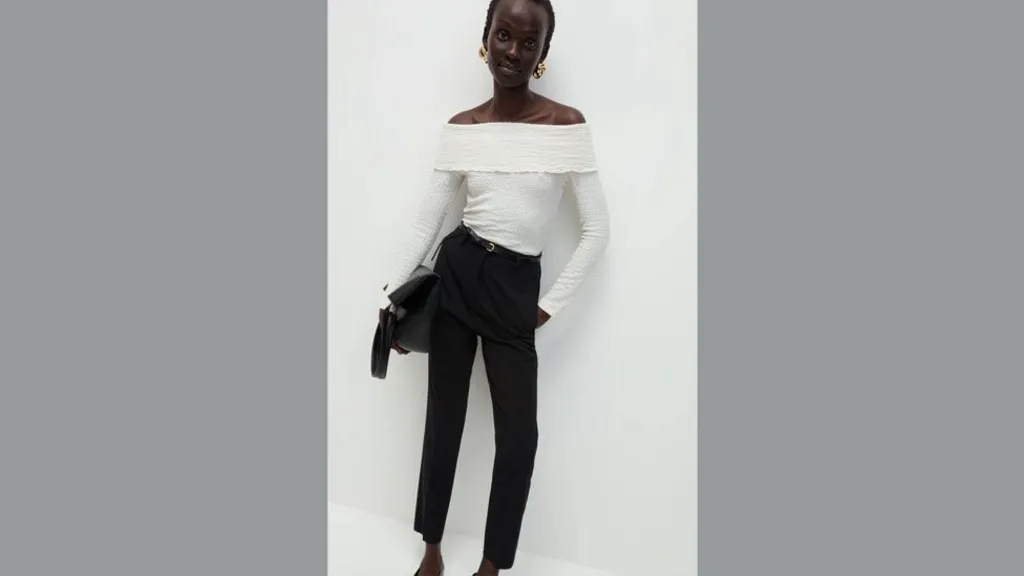Marks & Spencer (M&S) has had one of its fashion adverts banned after the UK’s Advertising Standards Authority (ASA) ruled that the model featured appeared “unhealthily thin.”

The ad, which appeared on M&S’s app, showed a model in an off-shoulder white top, slim-fit trousers, and pointed shoes. The ASA said her pose, clothing, and camera angle all emphasised her thin frame, calling the image “irresponsible.”
M&S responded by saying it promotes inclusive fashion and that the model’s pose was meant to show confidence, not slimness. Still, the brand has removed the ad and pledged to review how it portrays body types in future campaigns.
This comes shortly after a similar ruling against Next, whose jeans ad was pulled for making a model look underweight. And earlier this month, celebrity-endorsed weight loss posts were also banned for promoting prescription-only treatments.
So What?
Fashion isn’t just about style anymore, it’s about standards, representation, and responsibility.
What people see in ads impacts how they view their own bodies. When major brands show ultra-slim models, especially in poses that exaggerate thinness, it can send harmful signals especially to younger or more vulnerable audiences.
While M&S says it uses healthy, well-being-focused models, the ASA’s ruling makes it clear: intention doesn’t always match perception. A confident pose to one person might look dangerously thin to another.
This isn’t just about one ad, it’s a wake-up call to an entire industry.
Quick link: Joey Jones, Welsh Football Legend and Liverpool Hero, Dies at 70
Key Implications
-
Visual responsibility matters. Camera angles, clothing, and posture all play a role in how body image is portrayed.
-
Regulators are watching. ASA rulings show a clear trend: brands will be held accountable for promoting unrealistic or unhealthy standards.
-
Mental health is on the table. The way bodies are shown in advertising can contribute to body image issues, eating disorders, and self-esteem problems.
-
Public trust is at stake. Consumers expect brands to model values, not just clothes.
Practical Takeaways
-
If you’re in marketing or fashion, review how your models are styled and posed. A healthy model can still be portrayed poorly depending on angles and presentation.
-
Diversity in body types is no longer optional, it’s expected.
-
Build internal review processes for ads before going live, especially for digital content.
-
Consumers: If something looks off or harmful, report it. ASA rulings are often triggered by viewer complaints.
Final Thoughts
Fashion has influence. What we see on screens shapes how we see ourselves.
That’s why moments like this matter, it’s not just about an advert, it’s about an industry learning to be aspirational without being harmful.
M&S responded quickly, but the message is bigger than one brand: Good style should never come at the cost of well-being.
Stay Ahead Effortlessly with SoWhat
Want to stay informed without endless scrolling? SoWhat is your AI-powered insights assistant, delivering concise, personalised reports on world events straight to your inbox every 24 hours. Stay sharp. Stay informed. Get your free report HERE.













2vdk96
na213b
Logo bj88 rất ấn tượng với phong cách châu Á. Mỗi lần thấy logo là biết đây là nhà cái uy tín. Thiết kế đơn giản nhưng chuyên nghiệp! bj88 logo
tyauwu
1y2rga
ldg5m1
**mindvault**
mindvault is a premium cognitive support formula created for adults 45+. It’s thoughtfully designed to help maintain clear thinking
**prostadine**
prostadine is a next-generation prostate support formula designed to help maintain, restore, and enhance optimal male prostate performance.
**sugarmute**
sugarmute is a science-guided nutritional supplement created to help maintain balanced blood sugar while supporting steady energy and mental clarity.
**gl pro**
gl pro is a natural dietary supplement designed to promote balanced blood sugar levels and curb sugar cravings.
**vittaburn**
vittaburn is a liquid dietary supplement formulated to support healthy weight reduction by increasing metabolic rate, reducing hunger, and promoting fat loss.
**mitolyn**
mitolyn a nature-inspired supplement crafted to elevate metabolic activity and support sustainable weight management.
**prodentim**
prodentim an advanced probiotic formulation designed to support exceptional oral hygiene while fortifying teeth and gums.
**synaptigen**
synaptigen is a next-generation brain support supplement that blends natural nootropics, adaptogens
**zencortex**
zencortex contains only the natural ingredients that are effective in supporting incredible hearing naturally.
**yu sleep**
yusleep is a gentle, nano-enhanced nightly blend designed to help you drift off quickly, stay asleep longer, and wake feeling clear.
**nitric boost**
nitric boost is a dietary formula crafted to enhance vitality and promote overall well-being.
**glucore**
glucore is a nutritional supplement that is given to patients daily to assist in maintaining healthy blood sugar and metabolic rates.
**wildgut**
wildgutis a precision-crafted nutritional blend designed to nurture your dog’s digestive tract.
**breathe**
breathe is a plant-powered tincture crafted to promote lung performance and enhance your breathing quality.
**energeia**
energeia is the first and only recipe that targets the root cause of stubborn belly fat and Deadly visceral fat.
**boostaro**
boostaro is a specially crafted dietary supplement for men who want to elevate their overall health and vitality.
**pinealxt**
pinealxt is a revolutionary supplement that promotes proper pineal gland function and energy levels to support healthy body function.
**prostabliss**
prostabliss is a carefully developed dietary formula aimed at nurturing prostate vitality and improving urinary comfort.
**potentstream**
potentstream is engineered to promote prostate well-being by counteracting the residue that can build up from hard-water minerals within the urinary tract.
**hepato burn**
hepato burn is a premium nutritional formula designed to enhance liver function, boost metabolism, and support natural fat breakdown.
**hepatoburn**
hepatoburn is a potent, plant-based formula created to promote optimal liver performance and naturally stimulate fat-burning mechanisms.
**cellufend**
cellufend is a natural supplement developed to support balanced blood sugar levels through a blend of botanical extracts and essential nutrients.
**prodentim**
prodentim is a forward-thinking oral wellness blend crafted to nurture and maintain a balanced mouth microbiome.
**flow force max**
flow force max delivers a forward-thinking, plant-focused way to support prostate health—while also helping maintain everyday energy, libido, and overall vitality.
**revitag**
revitag is a daily skin-support formula created to promote a healthy complexion and visibly diminish the appearance of skin tags.
**neuro genica**
neuro genica is a dietary supplement formulated to support nerve health and ease discomfort associated with neuropathy.
ixyew7
**sleeplean**
sleeplean is a US-trusted, naturally focused nighttime support formula that helps your body burn fat while you rest.
**memory lift**
memory lift is an innovative dietary formula designed to naturally nurture brain wellness and sharpen cognitive performance.
Xosohaugiang seems pretty legit. If you’re into checking those results, this is your go-to. Check it out: xosohaugiang